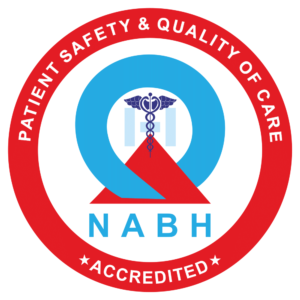Hernias, those pesky bulges in the abdomen where tissue pushes through weakened muscles, are a common issue. While they can be painless initially, they often lead to discomfort and can worsen over time. Thankfully, advancements in surgical techniques have given rise to laparoscopic hernia repair, a minimally invasive approach that offers significant advantages over traditional open surgery.
Understanding Hernias
Before diving into the world of laparoscopic repair, let’s get a basic understanding of hernias. They occur when an organ or tissue pushes through a weak spot in the muscle wall of your abdomen. This weakness can be present at birth (congenital) or develop over time due to strain, aging, or previous surgeries. Common types of hernias include:
- Inguinal hernia: The most frequent type, occurring in the groin area.
- Femoral hernia: Similar to inguinal hernias but develop lower in the groin.
- Umbilical hernia: Develops near the belly button, often seen in newborn babies.
- Hiatal hernia: Occurs in the upper abdomen, where the stomach pushesthrough the diaphragm.

Why Laparoscopy?
Traditionally, hernia repair involved open surgery, creating a larger incision to access the hernia and perform the repair. While effective, it often led to more pain, a longer hospital stay, and a slower recovery time. Laparoscopic surgery, also known as keyhole surgery, offers a much better experience for patients.
Here’s how laparoscopy works:
- Small Incisions: Instead of a large cut, the surgeon makes several tiny incisions, typically three or four.
- Visualization: A laparoscope, a thin tube with a camera attached, is inserted through one incision. It projects magnified images of your insides onto a screen, allowing the surgeon to see the area clearly.
Repair Instruments: Surgical instruments are inserted through the other incisions. The surgeon uses these instruments to repair the hernia, often with a mesh patch to strengthen the weakened area.

Benefits of Laparoscopic Hernia Repair
The advantages of laparoscopic hernia repair are numerous, making it the preferred method for most patients:
- Reduced Pain: Smaller incisions translate to less tissue disruption, leading to significantly less post-operative pain.
- Faster Recovery: With less tissue trauma, patients experience a quicker recovery time. This means shorter hospital stays and a faster return to normal activities. Studies show patients can often resume light activities within days and return to work sooner compared to open surgery.
- Minimal Scarring: Smaller incisions result in minimal scarring, leading to a more cosmetically pleasing outcome.
- Lower Risk of Infection: Smaller incisions also reduce the risk of infection, a potential complication of open surgery.
- Reduced Blood Loss: Laparoscopic surgery typically involves less blood loss than open surgery.
Outpatient Option: In some cases, laparoscopic hernia repair can be performed as an outpatient procedure, allowing you to go home the same day.

Recovery After Laparoscopic Hernia Repair
While laparoscopy offers a faster recovery, it’s still a surgery, and proper healing is crucial. Here’s what you can expect:
- Pain Management: You’ll likely experience some pain after surgery, but medication will help manage it.
- Activity Restrictions: Initially, your doctor may advise you to limit strenuous activities like heavy lifting. Gradually, you can increase your activity level as you heal.
- Dietary Modifications: You may be given specific dietary instructions to promote healing and prevent constipation.
- Follow-up Appointments: Regular follow-up visits with your doctor are essential to monitor your progress and ensure proper healing.
Is Laparoscopy Right for You?
Laparoscopic hernia repair is a safe and effective option for most patients with hernias. Your doctor will consider factors like the type and location of your hernia, overall health, and medical history to determine if laparoscopy is the best approach for you.
Conclusion
Laparoscopic hernia repair offers a significant advancement in hernia treatment. With its minimally invasive nature, the procedure leads to faster recovery, less pain, and better cosmetic outcomes. If you’re facing a hernia, discuss laparoscopic repair with our Expert Dr. Deepa Kulkarni (General / Laparoscopic / Hernia Surgeon & Breast Specialist ) for a proper diagnosis and treatment plan.
Remember, early diagnosis and treatment are key to preventing complications and achieving a successful outcome.





